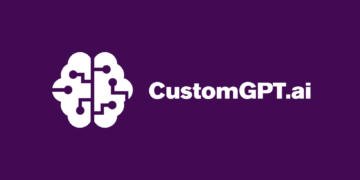Can one clear method turn scattered programs into measurable progress that leaders can trust?
This how-to guide helps organizations in the United States design a practical approach from defining goals to consistent reporting and learning. It shows how rigorous measurement and thoughtful data use connect daily activities to measurable outcomes and better decisions.
Start small: build a Theory of Change and a simple logic model, pick three to five core indicators, and use the tools you already have like Power BI, Tableau, CRMs, or a data warehouse. This streamlined method reduces duplicate records and long, non-repeatable cycles.
We combine quantitative and qualitative methods so community voices inform conclusions. The guide also breaks down common frameworks into actionable choices and outlines steps to make analytics repeatable and cost-effective.

Key Takeaways
- Define a clear Theory of Change and a logic model to guide measurement.
- Focus on a small set of meaningful indicators and right-sized data collection.
- Use existing BI and CRM tools to create repeatable analytics.
- Blend quantitative metrics with stakeholder voices for richer insights.
- Standard operating practices and audits prevent data quality issues.
- Start small and scale as capacity and needs grow.
What Is Social Impact Evaluation and Why It Matters Today
A repeatable measurement approach lets organizations see if their programs produce real change.
User intent and definition: understanding outcomes, measurement, and data
Evaluation is a structured process that links daily work to clear outcomes using relevant indicators and data. It maps activities to results like health, housing stability, or employment. A practical cycle includes mission and theory of change, frameworks and indicators, data strategy, analytics, and reporting for continuous improvement.
By collecting baseline and follow-up data, organizations track whether interventions generate positive change. Focusing on material indicators reduces noise and clarifies the path from actions to outcomes that matter to a community.
Linking measurement to decisions, performance, and resource allocation
Good measurement supports accountability and better decisions. Evidence shows what works, so leaders can scale effective programs and reassign resources where they do more good.
Evaluation acts as an early-warning system for unintended effects and embeds learning into routine management. Clear definitions let partners benchmark performance using common indicators and improve planning across organizations.
Build Your Foundation: Mission, Theory of Change, and Logic Model
Translate your mission into measurable goals that guide daily program choices. A social impact model turns intent into a clear theory of change or logic model. That model links inputs, activities, outputs, and outcomes like better health, economic opportunity, or environmental protection.
Translating your mission into clear objectives
Start by naming the problem, the population you serve, and the causal pathway from resources to outcomes. Write concise objectives that state who will change, what will change, and by when.
Mapping inputs, activities, outputs, and outcomes
Map funding, staff, and tools to concrete activities such as workshops or services. Then define outputs (attendance, service units) and outcomes (improved quality of life or employment).
Setting precise, time-bound targets aligned with needs
Choose a small set of KPIs linked to your logic model. Document methods for collecting each indicator and set targets based on local baselines and disaggregated community data.
Plan for long time horizons and unintended results. Include learning questions, validation points, governance for revisiting targets, and simple tools like shared spreadsheets or CRMs to track progress consistently.
Select the Right Measurement Frameworks and Indicators
Choosing the right measurement framework helps organizations compare results and report clearly to partners and funders. The choice affects which indicators you track, how you collect data, and who will use your findings.

When IRIS+ and SDG-aligned metrics fit
IRIS+ offers an open-source index mapped to the UN SDGs (about 594 metrics as of 2019). It is a strong start for nonprofits and social enterprises that want global comparability and clear, SDG-linked indicators.
GRI, SASB, and B Corp—pick by size and audience
GRI supports broad non-financial reporting across governance, environment, and stakeholders. SASB’s 77 industry standards suit large corporations reporting for investors and ESG. B Corp certification fits mission-driven startups and midsize companies, using a survey-driven assessment across five categories.
Start small and balance standard with custom
Begin with three to five material KPIs tied to your Theory of Change. Pair standardized indicators for benchmarking with a few custom measures that capture organization-specific learning.
Document indicator definitions, sources, and calculation rules. Use framework templates and existing tools to speed setup, and revisit framework choices annually as programs and reporting needs evolve.
Design a Practical Data Strategy for Collection, Storage, and Analysis
Good data design starts by matching what you need to what you actually collect. Inventory your records and ask which elements inform decisions. Common data sources include program registrations, surveys, operational logs, and administrative systems.
Systems, sources, and workflows
Choose right-sized tools: begin with Excel or Google Sheets, add CRMs like Salesforce or Zoho, and centralize into a data warehouse as volume grows. Use SurveyMonkey or Google Forms for simple surveys and BI platforms such as Power BI or Tableau for analysis and dashboards.
Establish a governed pipeline from intake to storage to dashboards. Define owners, schedule quality checks, and document calculation logic so teams can trust outputs.
Practical steps to start
- Map registrations, surveys, case notes, and admin files to core indicators.
- Standardize forms and define minimum viable datasets to reduce collection burden.
- Include reference tables (participants, programs, sites) for joins and longitudinal tracking.
- Automate reports with BI tools, set access controls, and budget resources for training and maintenance.
Ensure Data Quality, Intentionality, and Integratability
Good decisions depend on data that is consistent, traceable, and easy to join. Start with a short plan that names who owns records, which indicators matter, and how long records are kept.
High-quality data begins with durable unique IDs for participants. Use IDs that link surveys, registrations, and operational systems without exposing personal details.
Unique IDs, standardized entry, deduplication, and regular audits
Create simple entry rules for names, dates, and codes to avoid typos that break joins. Schedule deduplication routines and quarterly audits to surface systemic problems early.
Store records in structured, analysis-ready tables so teams can query across programs and time. Train staff on these practices and use validation rules in your CRM to block incomplete entries.
Practical steps:
- Use a non-identifying durable ID strategy to link records safely.
- Standardize formats and require key fields at intake to reduce errors.
- Track quality metrics (completeness, timeliness, accuracy) and act on trends.
Document an escalation path for data issues and align access with privacy rules. These simple steps improve quality, cut duplication, and let organizations trust their reports and analysis.
From Data Collection to Insight: Methods for Impact Analysis
A focused analysis pipeline helps teams move from scattered data to clear conclusions. Triangating multiple sources confirms findings and strengthens causal claims.
Triangulating qualitative and quantitative data
Combine surveys, administrative records, and interviews to cross-check results. Use qualitative narratives to explain why numbers change and to surface mechanisms behind outcomes.
Counterfactuals and contribution analysis
Where feasible, use counterfactual comparisons—matched groups or pre-post designs—to estimate what would have happened without the program.
When experiments aren’t possible, apply contribution analysis to test whether activities plausibly led to results and to rule out alternatives.
Benchmarking partners and programs
Standardize a core set ofindicatorsacross partners for fair benchmarking. Run sensitivity checks, document assumptions, and log uncertainties so decision makers see the strength of evidence.
Practical practices: calibrate rigor to capacity, automate recurring analysis with BI tools, and maintain an insights log that links findings to actions, owners, and timelines.
Stakeholder Engagement and Ethical Practices
Trust grows when beneficiaries help shape what success looks like and how it is measured. Clear stakeholder engagement turns findings into useful guidance for organizations and funders. Good engagement also guards dignity and builds stronger programs.
Including beneficiaries, community members, and funders
Involve beneficiaries and community members in defining outcomes, reviewing findings, and setting priorities. Invite stakeholders to validate results so reports reflect lived experience.
Set a simple engagement plan that states frequency, methods, and feedback loops. Offer accessible formats and languages, and compensate participants when feasible to honor time and expertise.
Data privacy, security, and respectful reporting
Protect privacy with role-based access, minimum necessary data use, and clear documented policies. Ensure consent is informed and culturally appropriate with opt-outs and transparent sharing rules.
Report respectfully: avoid stigmatizing language, share limitations with findings, and create channels for stakeholders and funders to discuss next steps. Train staff on ethical practices and include safeguards in routine management.
Social Impact Evaluation: A Step-by-Step Process You Can Repeat
Follow a clear, repeatable cycle so your organization turns plans into reliable metrics and timely decisions.
Start by mapping mission to a Theory of Change or logic model. Then set an impact strategy, pick frameworks and indicators, and build a data strategy that fits your capacity.
Design the collection instruments, systems, and roles so teams can gather quality data. Establish data management routines for validation, deduplication, and regular audits to keep records trustworthy.
Analyze using triangulation and the right level of rigor. Synthesize findings into prioritized actions that inform program choices and policy decisions.
Repeat the cycle on a set cadence (for example, quarterly). Assign owners, due dates, and resources so improvements move from insight to action.
- Design: refine change strategy, learning questions, and KPIs.
- Frameworks & indicators: map measures to your logic model and document sources.
- Data collection & management: instruments, systems, validation, and audits.
- Analysis & reporting: triangulate, prioritize findings, and share with stakeholders.
- Close the loop: assign owners, track process metrics, and repeat for continuous improvement.
Reporting, Learning, and Continuous Improvement
Timely dashboards bridge raw data and the management decisions that follow. Reporting should balance accountability with learning. Use concise reports to show performance and surface lessons for improvement.
Weave qualitative insights into quantitative reporting so numbers tell a clearer story. Integrate quotes, short vignettes, and observations into dashboards to explain the “why” behind trends. Stakeholders validate findings and improve accuracy.

Weaving qualitative insights into quantitative reporting for accountability
Embed case notes and participant quotes in summary visuals. Align reports with framework expectations and audience needs to build trust. Standardize templates and data refresh cadences for consistent reporting across programs.
Closing the loop: governance, management decisions, and policy alignment
Establish governance practices to review analyses, agree on conclusions, and approve external communications. Link insights to clear owners, timelines, and budgets so recommendations become action.
Track performance against targets and visualize gaps to prioritize improvement. Document policy implications when findings suggest changes to eligibility or service models. Publish a learning agenda and share summaries back to participants to close the feedback loop.
Conclusion
A focused change strategy and steady practices help organizations turn data into useful decisions.
Start with a small set of material indicators tied to your logic model and community needs. Use unique IDs, standardized entry, deduplication, and routine audits to keep records reliable over time.
Blend quantitative measures with qualitative engagement so stakeholders and members shape what success means. Align frameworks (IRIS+, GRI, B Corp, or SASB) to your context and capacity, starting small and scaling as expertise grows.
Translate findings into action: assign owners, set timelines, and budget resources for follow-up. Strong reporting builds trust with communities, funders, and partners and guides smarter resource allocation.
Measure what matters, engage respectfully, and persist in seeking positive change as data sources expand and practices improve.
FAQ
What is the purpose of conducting a social impact evaluation?
The goal is to measure changes caused by programs and guide better decisions, resource allocation, and program design. Evaluations show what works for community members, reveal gaps in performance, and help organizations prioritize activities for measurable outcomes.
How do I link a mission to a clear theory of change?
Start by defining the long-term outcome you seek. Map inputs, activities, outputs, and short- and medium-term results. Use a logic model to connect resources to expected change and set time-bound targets tied to stakeholder needs.
Which measurement frameworks should we consider?
Choose frameworks that match scale and context. IRIS+ aligns well with UN SDGs for standardized reporting. GRI and SASB suit larger organizations with complex disclosures, while B Corp standards work for mission-driven businesses. Begin with three to five core KPIs and add organization-specific indicators.
What data sources are most useful for rigorous measurement?
Combine surveys, administrative records, program registration data, and operational metrics. Use qualitative interviews and focus groups to add context. Triangulating multiple sources improves confidence in results and informs stakeholders about real change.
How do I ensure data quality and integratability?
Implement unique IDs, standardized entry fields, deduplication routines, and regular audits. Store data in centralized systems like a CRM or data warehouse and document workflows to maintain consistency and enable reliable analysis.
What analysis methods show causal contribution to outcomes?
Use counterfactual approaches where feasible, such as matched comparisons or randomized designs. When those aren’t possible, contribution analysis and theory-based tracing help attribute change by linking activities to plausible outcomes supported by evidence.
How should we engage stakeholders throughout the process?
Involve beneficiaries, community members, staff, funders, and partners from planning through reporting. Co-design indicators with stakeholders, seek feedback on findings, and use participatory methods to ensure relevance and ethical practice.
What are best practices for ethical data use and privacy?
Obtain informed consent, limit data collection to what’s necessary, anonymize records, and secure systems against breaches. Follow local regulations and industry standards to protect participants and maintain trust.
How can small teams start without large budgets or experts?
Start small with a few core indicators, use existing administrative data, and adopt simple survey tools. Partner with universities or consultants for targeted support, and iterate—improvements come from regular cycles of measurement and learning.
How do you present findings to influence management and policy?
Combine clear quantitative indicators with qualitative stories that illustrate outcomes. Use dashboards and concise reports tailored to audiences—board members, program staff, and funders—and include actionable recommendations for governance and resource decisions.
What role does benchmarking play in assessing programs?
Benchmarking against peers or sector standards helps gauge relative performance, reveal best practices, and set realistic targets. Use common indicators to compare results and adapt approaches that have demonstrated success elsewhere.
How often should evaluations be conducted?
Balance frequency with program lifecycle and resources. Regular monitoring (monthly or quarterly) supports tactical decisions; in-depth evaluations every one to three years inform strategy and long-term improvement.





